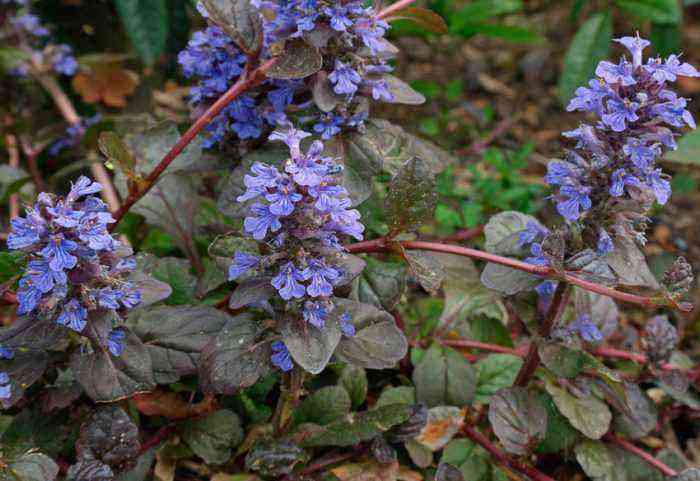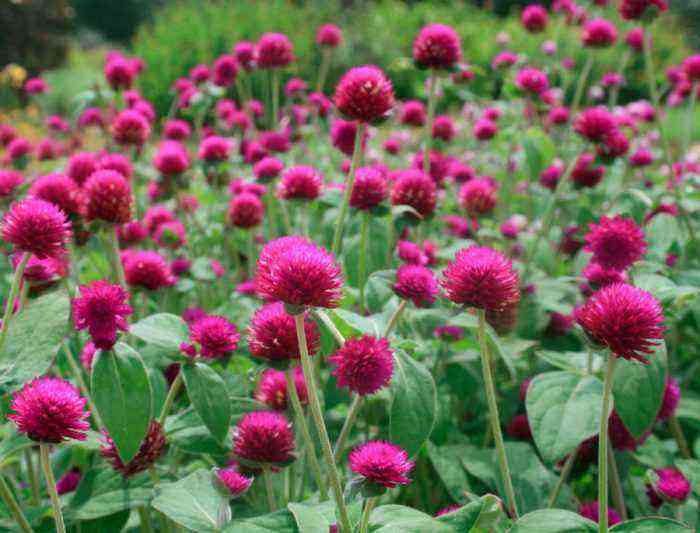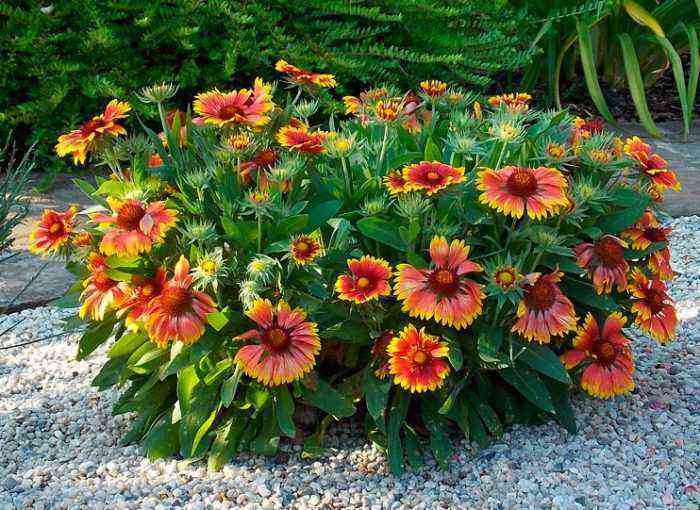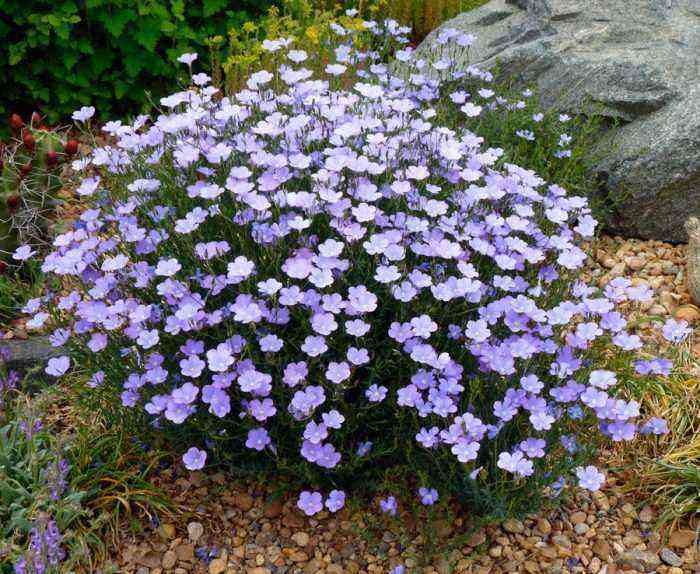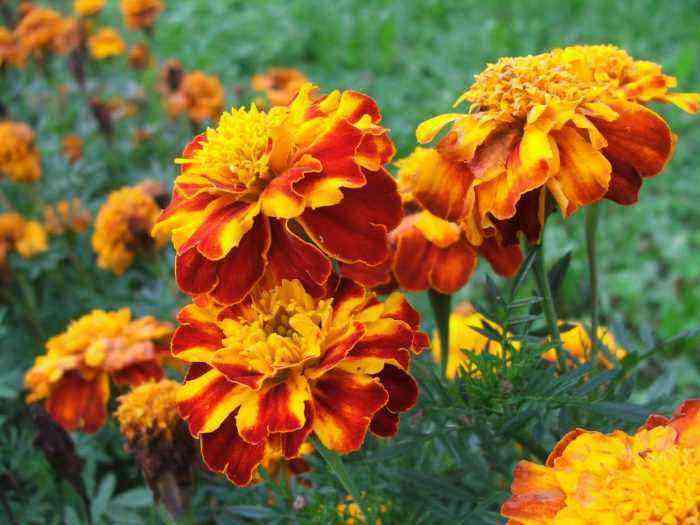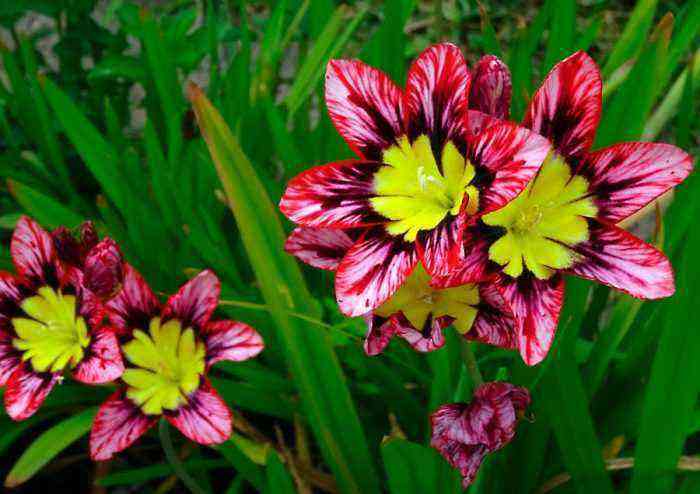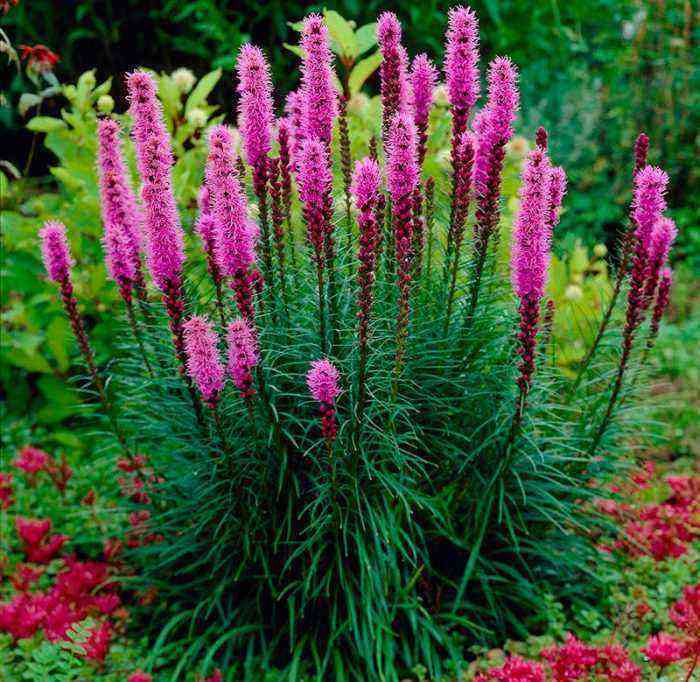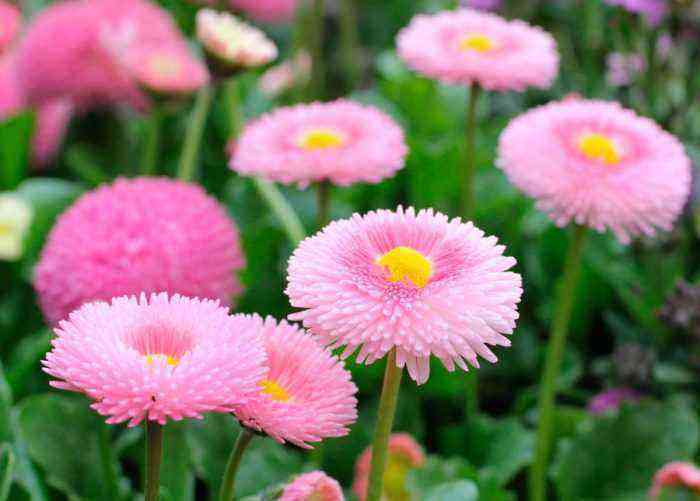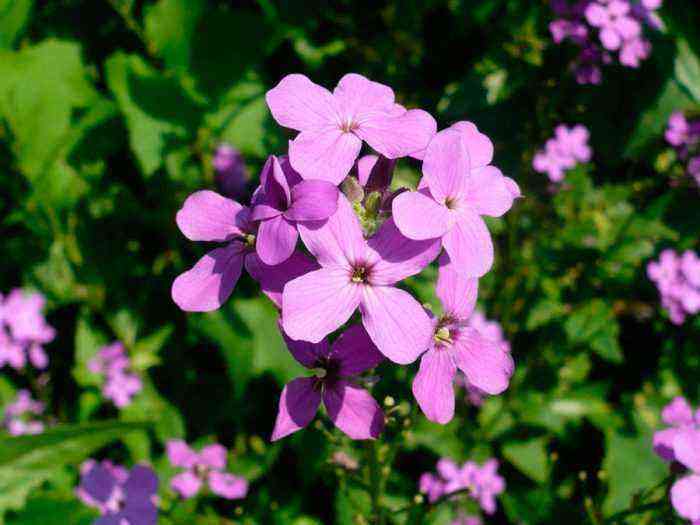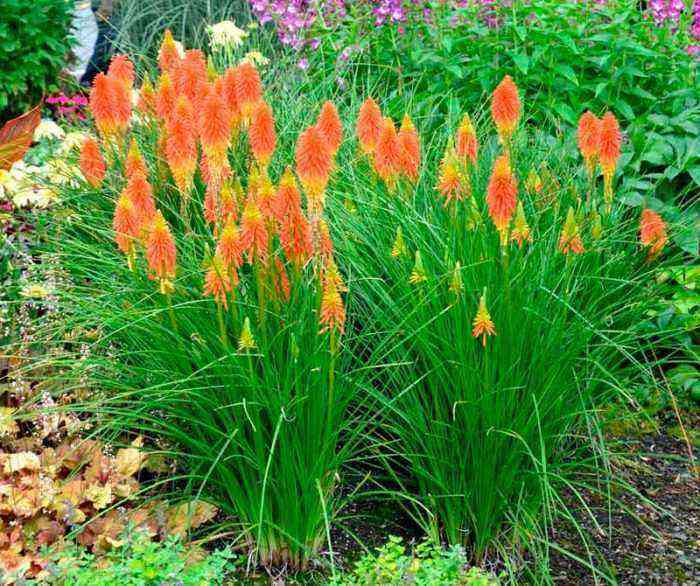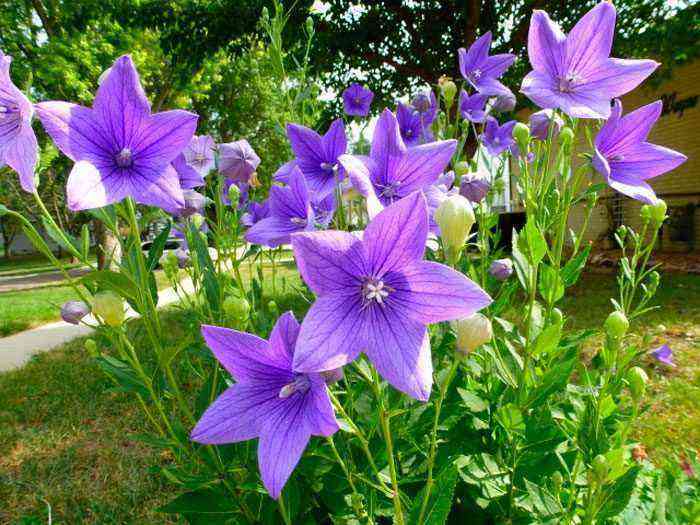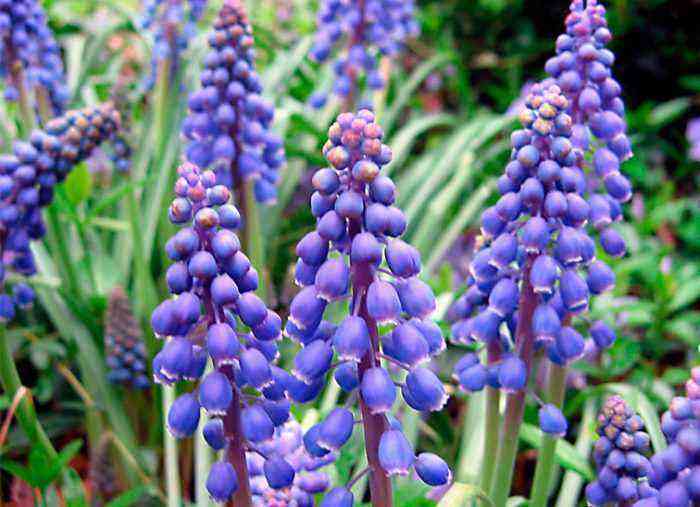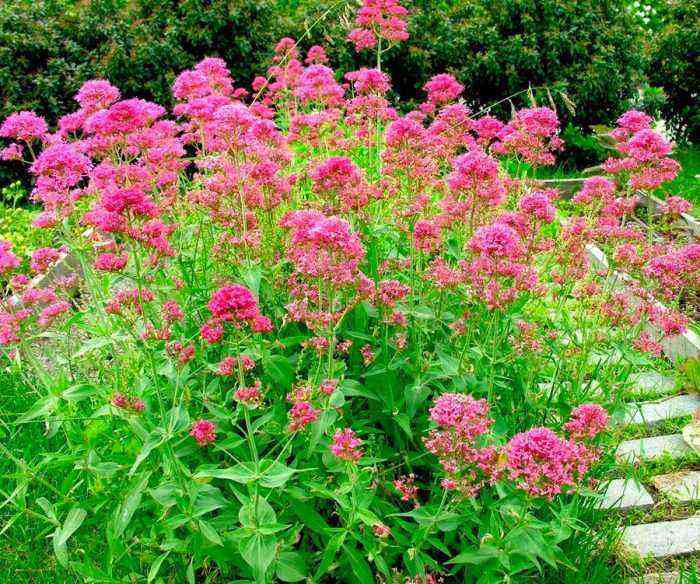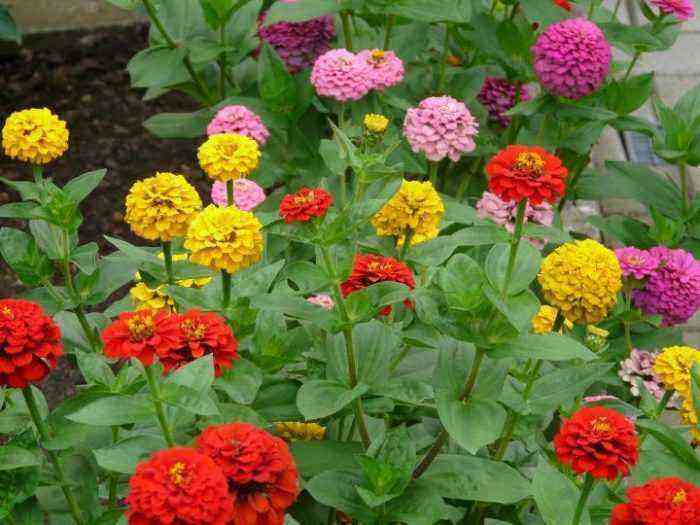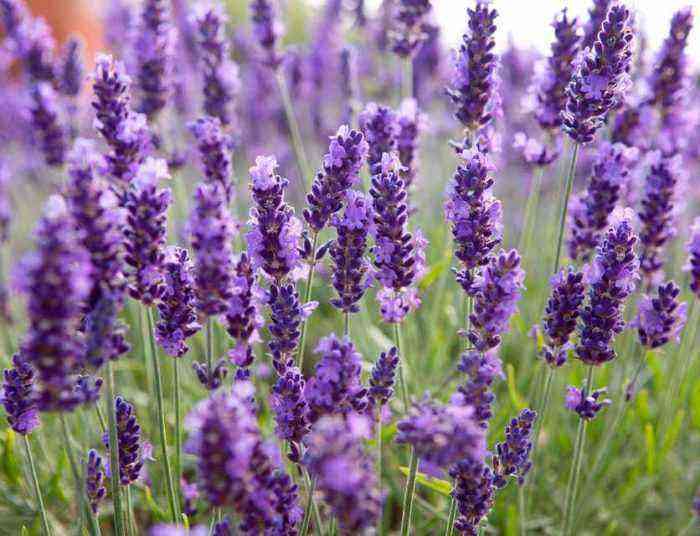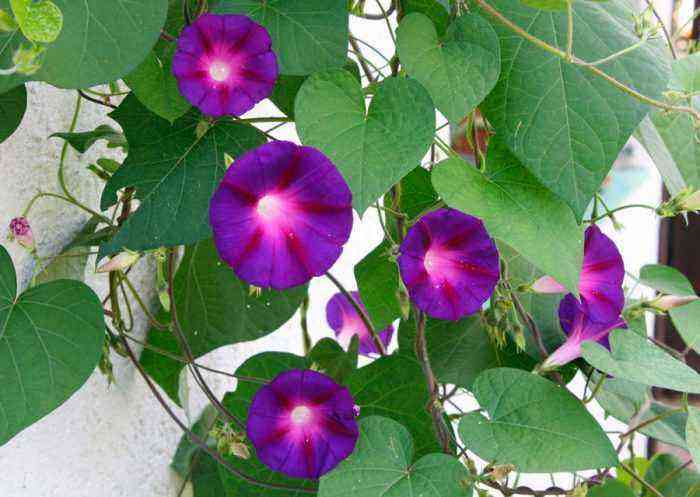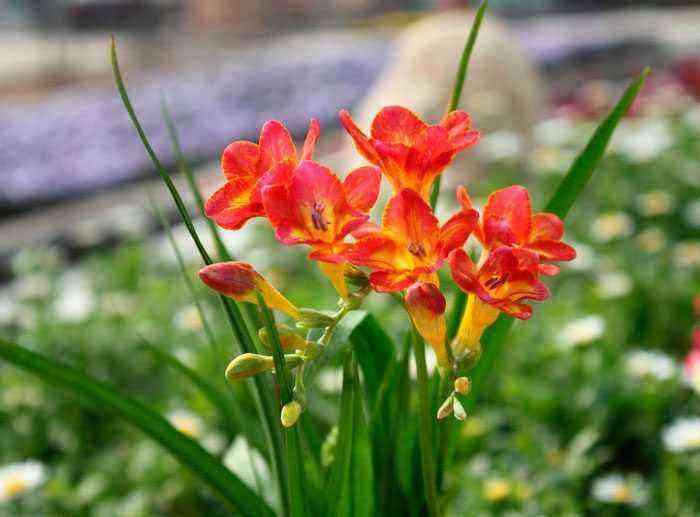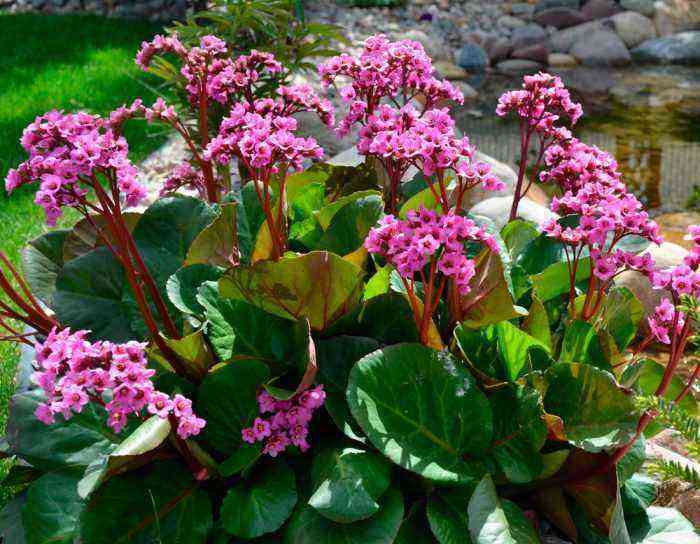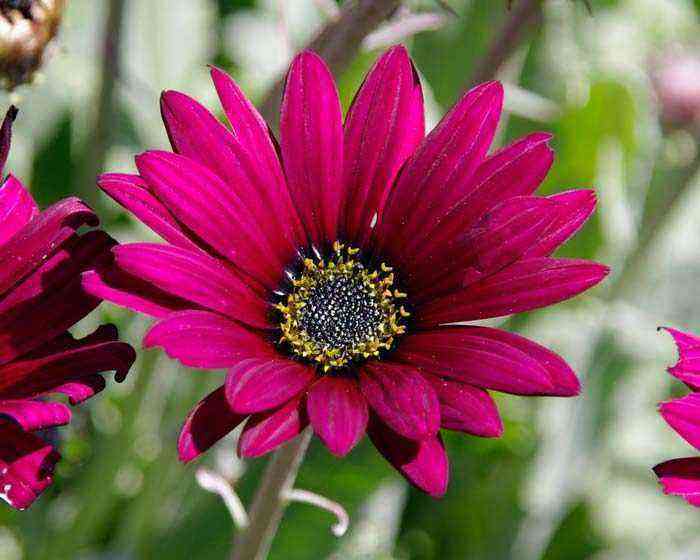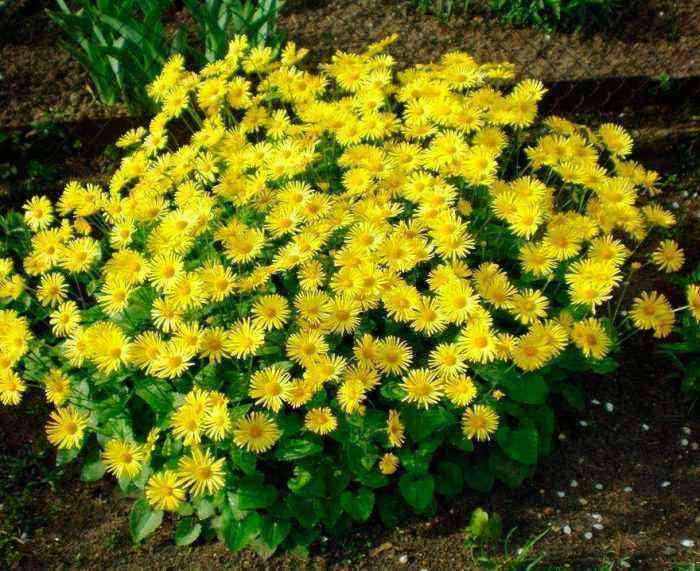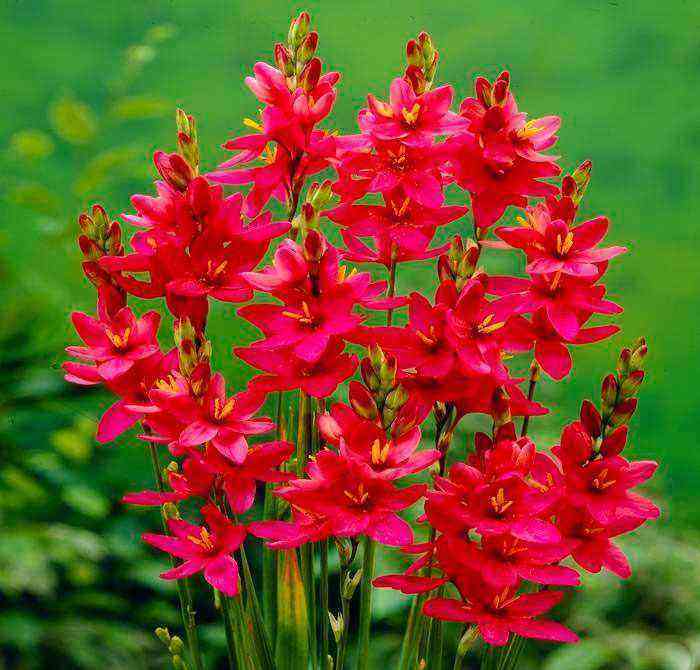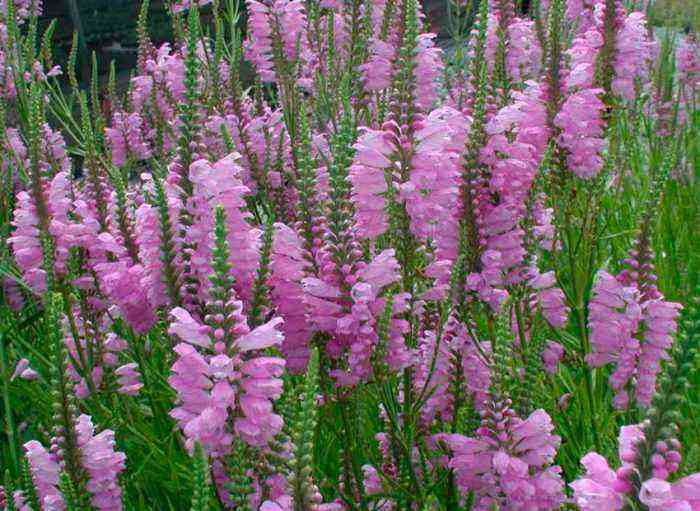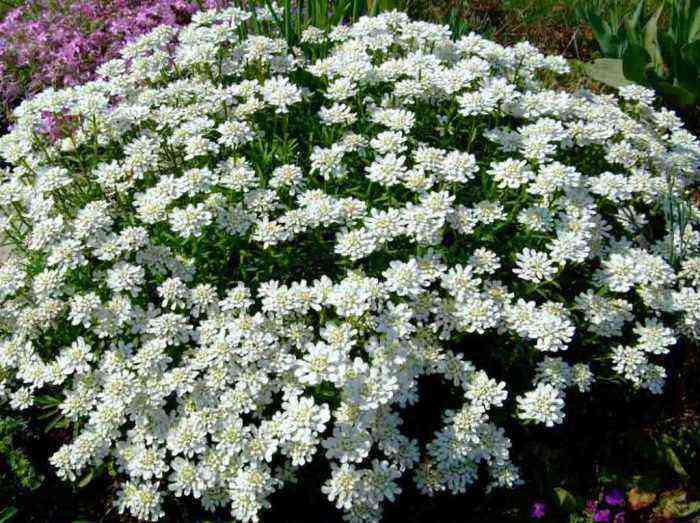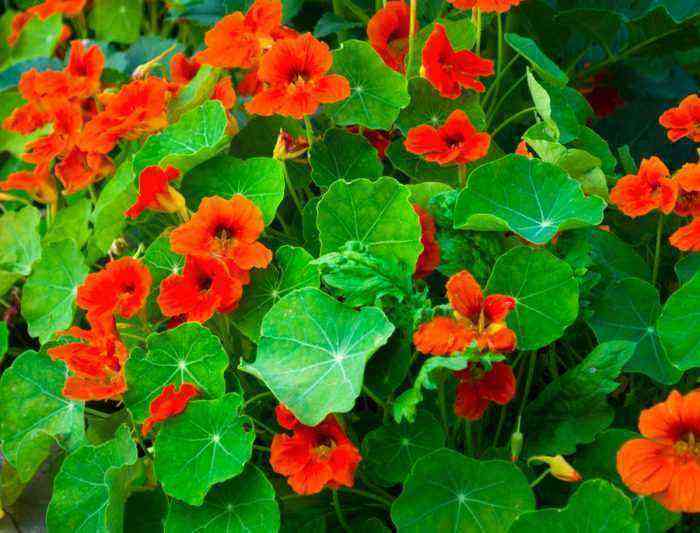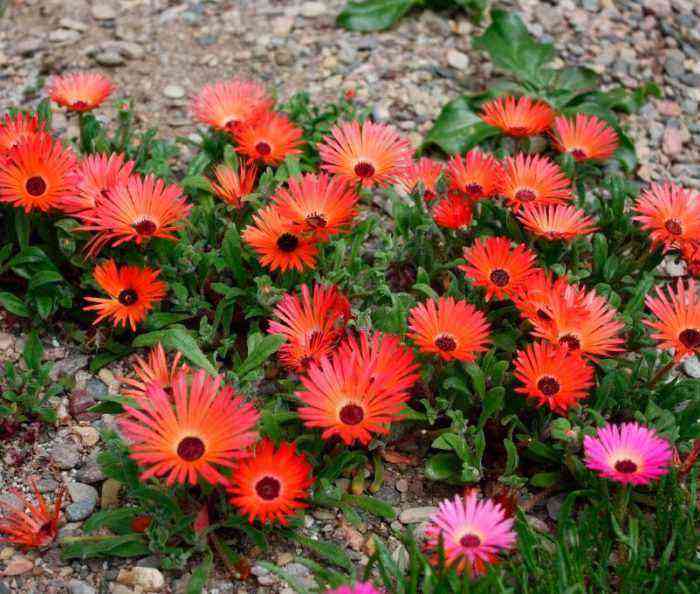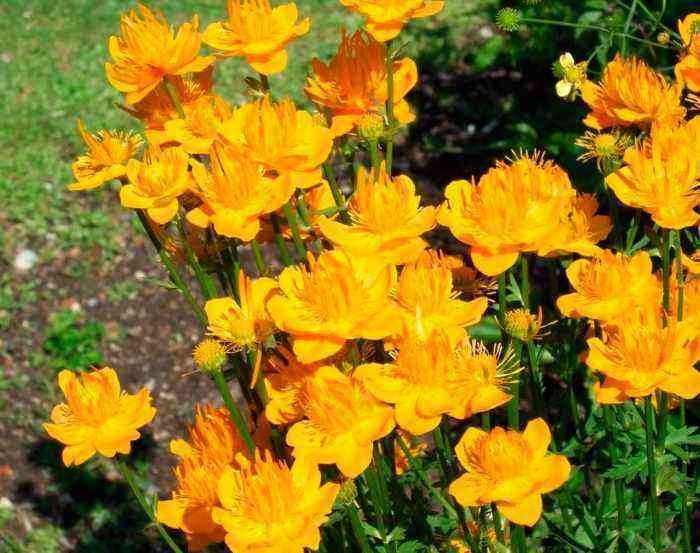Liana Tunbergia (Thunbergia) is a flowering plant and a member of the Acanthus family. Its homeland is the tropics of Africa, southern Asia and Madagascar. This genus unites about 200 species. This plant was named Tunbergia (scientific name) in honor of the Swede Karl Peter Thunberg, who was a naturalist and researcher of flora and fauna in South Africa and Japan. The inhabitants of European countries also call this plant black Suzanne due to the fact that there is an almost black dark purple eye in the center of the flower. It is cultivated as a garden and indoor plant.
Features of tunbergia


Thunbergia is represented by both shrubs and vines. Whole ovoid or cordate, and even oppositely located lobed leaf plates have non-rigid pubescence and reach 2,5-10 centimeters in length. There are species in which the edge of the leaves is serrated. The diameter of the spectacular flowers is 40 mm, they have a funnel-shaped shape and long pedicels. They can be single or included in inflorescences. Flowers have a variety of colors, for example, they can be colored blue, violet, purple, orange, white, blue, purple, yellow and brown. There are even species with red flowers. There are certain types and varieties of tunbergia, the flowers of which emit a very strong smell. Flowering begins in July and ends in the last days of September. Under natural conditions, tunbergia is a perennial, but in the middle latitudes, due to too frosty winters, it is cultivated as an annual. Often such a flower is used for vertical gardening, since if it is provided with support, then the bush can grow up to 200 centimeters in height. Thunberg ampelnaya, as a rule, is grown indoors or in greenhouses as a perennial plant.
Growing tunbergia from seeds
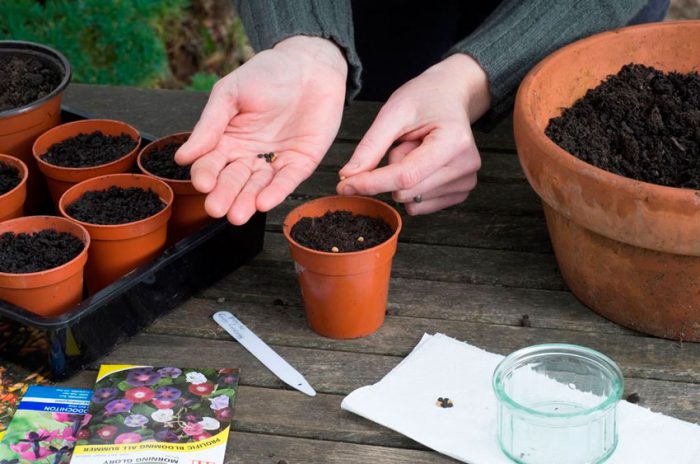

Sowing
It is necessary to sow tunbergia seeds at the end of winter or at the beginning of spring. Immediately before sowing, the seeds must be treated with fumar or epin. Then sowing is carried out in a container with a moistened soil mixture, which includes peat, turf soil, sand (or sand, leafy earth and humus), which must be taken in a ratio of 1: 1: 1. Seeds should be sprinkled with a thin layer of substrate, and then the crops are carefully watered. Then the containers should be covered with foil or glass and placed on a windowsill, which should be well lit, but do not forget to protect crops from direct sunlight. Remember that the substrate in the containers must be constantly slightly moistened. In order for the seedlings to appear as quickly as possible, they should be placed in a place where the air temperature will be in the range from 22 to 24 degrees. If everything is done correctly, then the first shoots can be seen within 7 days after sowing. Once this happens, remove the cover.
Seedling
If the seedlings are excessively dense, then after the formation of 2 true leaf plates, it will be necessary to thin them out, while the weakest seedlings should be removed. You can also pick them. In order for the bushes to be more branched and thick, the seedlings are pinched after their height is 12-15 centimeters. In the event that it is important for you that the bushes have a lush green mass, then after you make a pick, feed the plants once every 1 days with fertilizers containing nitrogen. Those who value long and abundant flowering should take into account that seedlings do not need to be fed at all. In order to avoid picking, sowing is recommended to be carried out in peat cups, while 7 seeds should be placed in 1 at once.
Planting tunbergia in open ground
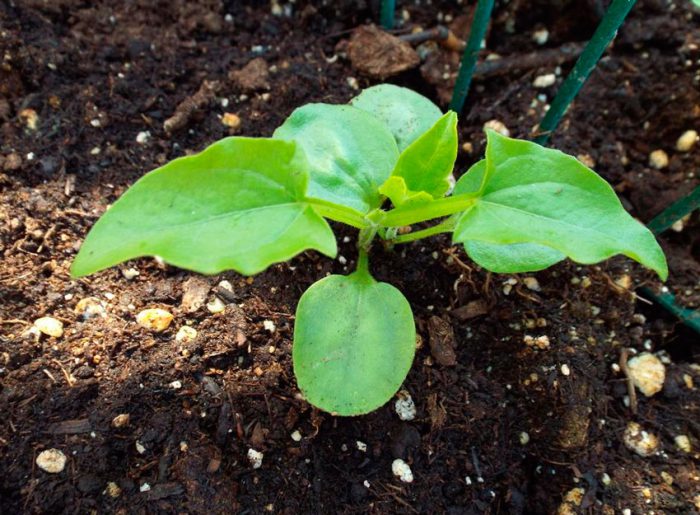

What time to plant
Planting seedlings in open soil is done after the frost has passed. For disembarkation, you should choose a site on the east, south or west side of the garden, which should be slightly shaded and protected from gusts of wind. The soil should be well-drained, neutral, nutrient-rich and calcareous. In this regard, if necessary, add lime in advance for digging on the site.
Landing features
When making planting holes, it should be remembered that the distance between them should vary from 0,3 to 0,45 m. Do not forget to install the support before planting seedlings, for this use a lattice or wire. It should be borne in mind that this vine can grow both upward and to the side. The planted plants need to be watered. Flowering, as a rule, begins 100 days after the pinching.
Features of care


Caring for Tunbergia is easy and cost-effective. At first, she needs moderate watering, and when flowering begins – abundant, with a lack of water, leaf plates and buds may fall off. If there is a long dry period in the summer, it will not be superfluous to spray the bushes with water, this should be done in the evening. Be sure to feed the plants at the time the buds appear. During spring and summer, they need to be fed 1 time in 4 weeks, using liquid mineral fertilizer for this, but remember that the main thing in this matter is not to overdo it. Regularly remove weak stems and flowers that have begun to fade. Do not forget to promptly direct the stems in the direction you want.
Diseases and pests
Very often, scale insects, spider mites and whiteflies settle on the bushes, and aphids can also harm the plant. In order to get rid of these pests, plants should be treated with phytoverm or actellik. If necessary, this treatment can be repeated 3 or 4 times, while the duration of the break between these procedures should be from 7 to 10 days. In some cases, fungal diseases occur. Infected foliage and flowers must be cut and destroyed, and the bush must be treated with fungicides.
If you water the tunbergia very abundantly, then mold will form on its leaves and shoots. If the foliage on the stems is very sparse, then this means that the vine feels a lack of light.
Thunbergia after flowering
Seed collection
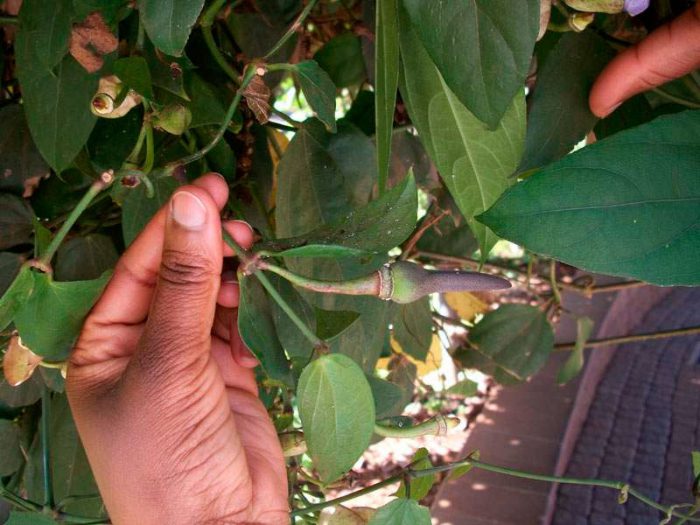

At the end of flowering, where the flowers used to be, fruit-boxes grow, inside which there are seeds. They need to be collected before they open on their own, and their contents spill out onto the surface of the site. The cut boxes must be brought into the room, where seeds are poured out of them onto a newspaper sheet. When they are dry, they are poured into paper bags and stored. The germination capacity of such seeds remains high for 2 years.
Wintering
The vine grown in open soil with the onset of autumn must be removed from the site. The fact is that she will die even if the winter is not very cold. However, sometimes Tunbergia is grown in a volumetric pot or tub. In this case, in the autumn, all the stems should be cut off, while each of them should have 4 or 5 buds. It is necessary to process the cut sites with a solution of potassium manganese. Bring the bush indoors and remove it to a place where the air temperature does not exceed 15 degrees. The plant will stay there until spring. Moisten the top layer of the substrate in the container occasionally.
Types and varieties of tunbergia with photos and names
Cultivated species of tunbergia are divided into vines and shrubs. Popular types of tunbergia creepers:
Thungbergia alata
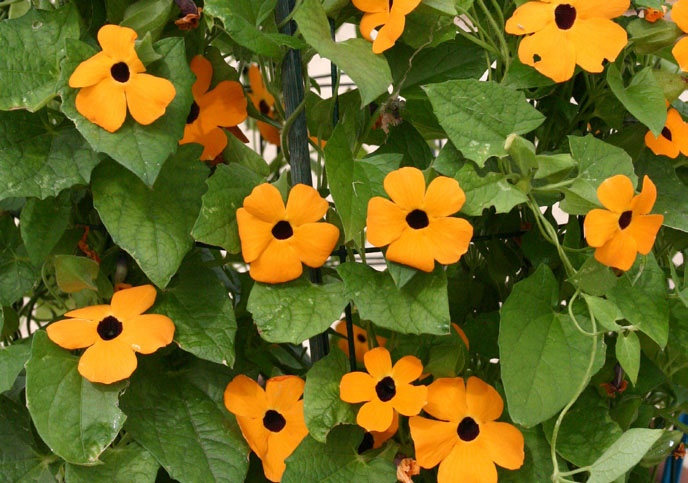

This species is the black-eyed Suzanne, described in detail above. The flowering of such a vine begins in August and ends in September. Cultivated since 1823. Popular varieties:


- Tunbergia Susi is a variety series with flowers of various colors: Susi Orange mit Auge – rich orange flowers, Susi Weib mit Auge – blooms with white flowers, Susi Gelb mit Auge – yellow flowers;
- African Sunset – flowering is observed throughout the summer period, the color of the flowers is terracotta;
- Tunbergia Gregor – this group includes 15 varieties, while their flowers are colored in various shades of orange, despite the fact that there is no dark eye in the middle of the flower, they still have a high decorative effect.
Tunbergia grandiflora (Thunbergia grandiflora), Tunbergia grandiflora, Blue tunbergia.
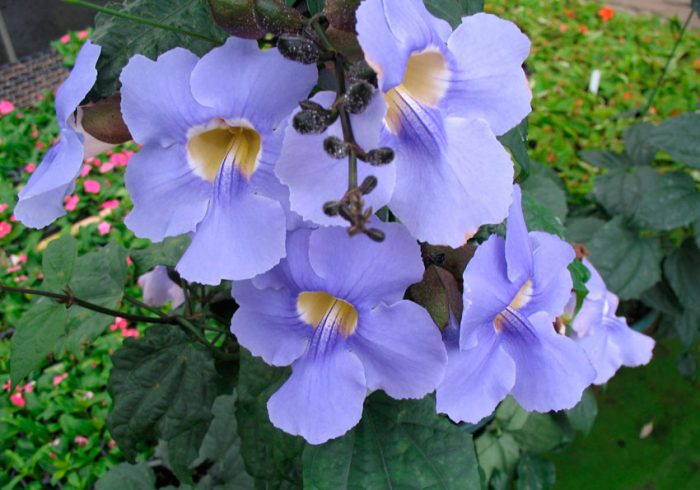

The homeland of such a strong herbaceous plant is India. Curly stems. The rich green leaf plates have a wide oval shape, while their length can vary from 15 to 20 centimeters. On the edges they have large teeth, the seamy surface of the leaves is pubescent. The flowers are about 8 centimeters in diameter and can be purple or blue. There is a speck of white in their pharynx. They are part of small-flowered, brush-shaped inflorescences.
Thunbergia fragrans
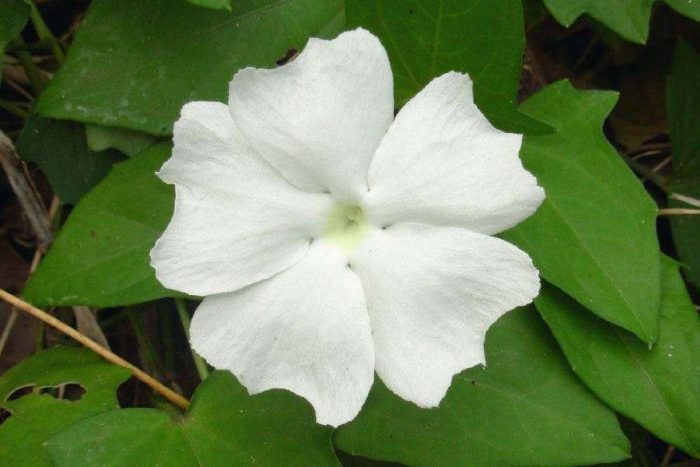

This evergreen vine is native to Southeast Asia and Australia. The length of such a plant can reach 6 m. Opposite ovoid leaf plates have a pointed upper part. Their front surface is dark green, and the back is pale green with a white median vein below. Large single wide open flowers are white and reach 50 mm in diameter. They have a couple of bracts and a very pleasant smell.
Thunbergia battiscombei
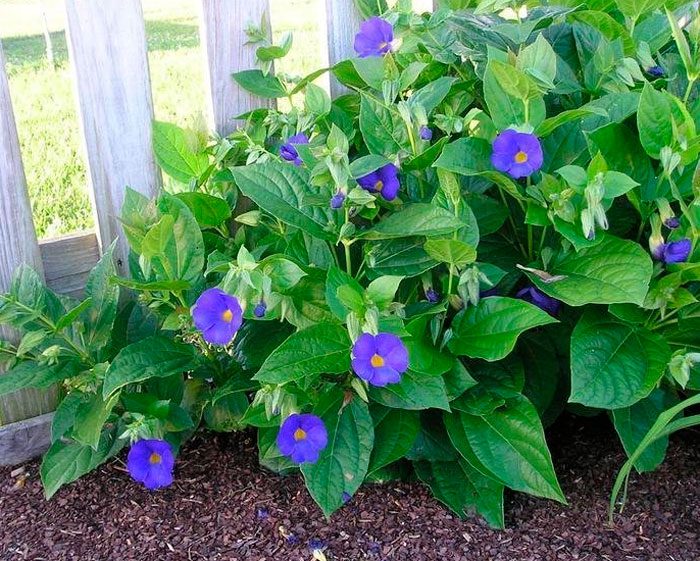

Such a plant has wide leaf plates. On the surface of the petals of blue flowers, a mesh is clearly visible.
Also, quite often such species are grown that are liana, such as: related tunbergia, laurel and mizorenskaya.
Shrub species such as Natal Tunbergia, Erect and Vogel are especially popular with gardeners.

